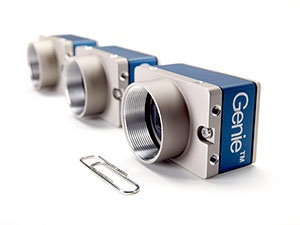Sep 22 2017
Teledyne DALSA, a Teledyne Technologies company and a worldwide leader in machine vision technology, has introduced two new models to its high-speed, versatile high-value Genie Nano Camera Series.
The new Genie Nanos use the latest IMX273 sensors from the Sony Pregius CMOS family of 1/3” CMOS image sensors that replace the soon-to-be discontinued CCD sensors of Sony. The two new models are available in 1.6 MP (1456 x 1088) resolution with a GigE Vision interface in monochrome or color.
 CMOS drop-in replacements for discontinued CCD models also bring 7x increase in frame rate. Credit: Teledyne DALSA
CMOS drop-in replacements for discontinued CCD models also bring 7x increase in frame rate. Credit: Teledyne DALSA
Followed by the Nano 1.6 MP models, two new additional 1/3” VGA Nano models will be introduced in Q4 2017 to replace the existing ICX424 CCD-based cameras. The new cameras are drop-in substitutes for the original CCD-based models at the same low cost, but with a frame rate that is almost seven times faster — up to 400 fps in VGA and up to 160 fps in 1.6 MP.
The IMX273-based models come with 3.45 µm pixel and a full frame electronic global shutter. Customers can expect high-speed performance, high resolution, and high image quality without distortion and quick throughput with the award-winning TurboDrive technology from Teledyne.
The Genie Nano cameras take complete advantage of the Sapera™ LT Software Development Kit (SDK) and the company’s Linux GigE-V Framework for embedded vision systems and the field-proven Trigger-to-Image-Reliability™ framework for complete system-level monitoring, diagnostics and control from image capture through transfer to host memory.
The main features of the Genie Nano cameras are as follows:
- Full frame electronic global shutter function
- TurboDrive technology for quick frame rates and full image quality
- Wide temperature ranging from -20 to 60 °C for imaging in harsh environments
- Small footprint / light weight: 21.2 mm x 29 mm x 44 mm/ 47g
The Genie Nano cameras also feature a robust design supported by a 3-year warranty. They are now available for sampling, with production in Q4 2017.